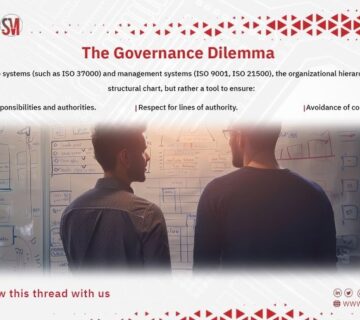The difference between digitization and digital transformation
Digitization is the process of digitizing the physical aspects of business processes and workflows. When non-digital or physical objects are represented in a digital format, it means that the computer system can use this information. For example, paper forms filled out by customers are converted into digital models that they complete online. This digital data can then be used for analytics and business intelligence.
To request feasibility study services for technology projects, specifications brochure services and UIUX interface design:
https://strategymission.org/request-services-ar/
Digitization initiatives may include actions such as:
Update old systems.
Automation of existing paper or manual processes.
Transfer the system to be available online.
While digitization alone is not a digital transformation, it is an important first step in digital transformation. Digital transformation has a much broader scope that leads to an enterprise’s comprehensive cultural transformation.
The feasibility of digital transformation towards full automation lies in:
- Increased productivity:
Emerging technologies such as cloud service can save time and improve efficiency in all kinds of business processes. For example, the use of digital technology such as artificial intelligence provides a space for employees to focus on tasks that require creativity and problem solving. Similarly, data analytics using machine learning can give you new insights into achieving your business goals faster.
- Improve customer experience:
Customers expect continuous availability of service across multiple channels. They also want to provide easy-to-use websites and communication systems that are compatible with mobile devices. Here are some digital transformations that have a direct impact on the customer experience:
– Developing applications and workflows for mobile devices.
– Adopt smart sensing technology to track orders and implement them faster.
– Adopt artificial intelligence to interact with customers in real time.
-Use automation to improve support and service provided to customers.
- Reduction of operational costs:
Investing in digital technology can significantly reduce running costs. It is also through which such business processes can be improved and costs reduced:
– Maintenance of equipment.
– Logistics and delivery.
– Energy expenditure
– Human resources expenditure.
– Customer support expenses.
Through:
– Eliminate or replace some resource-intensive workflows.
– Reduce expenditure on expensive infrastructure and equipment through managed services and cloud computing.
– Automate tasks using a range of smart sensors, smart devices, and machine learning.
This savings can be evaluated by KPIs measurable goals and criteria and evaluate before and after this change.
Digital transformation paths are multiple but can be summarized in the following paths:
Phase I. Status quo
During the first phase, companies continue to operate as usual and maintain the status quo without awareness of changing customer requirements and technological advances. The lack of digital initiatives may end up disappearing for any institution. You must move to the next stage as soon as possible.
Phase 2 – Active
During the second phase, companies become more aware of the need for digital improvement. It recognizes the current challenges it faces and its needs for a digital transformation initiative. Different sections begin to try to solve the same problems but in different ways. Although better than its predecessor, this phase reveals a lack of focus and unity. If institutions want to succeed in digital transformation, they will have to find a way out of the initial mess.
Phase 3 – Resolve Phase
Digital transformation begins when the company moves to a stage of resolve. Here, key digital leaders and change agents appear and begin testing new technologies. They seek formal approvals from the company’s executives to lead the change. At this point, a culture of work may become an obstacle, and leadership should actively promote a culture of innovation to bring about further transformation.
Phase 4 – Strategy
During Phase IV, the Foundation achieves cultural changes, so individual groups and sections agree to work collaboratively. Key stakeholders develop a focused strategic road map for successful digital transformation. They plan different aspects of change, such as ownership, research, effort and investment.
Phase 5. Targeting
During Phase 5, companies begin to implement the digital transformation strategy we set out in the previous phase. It has a multi-divisional team of innovators who determine what needs to be done right now and in the coming months to succeed in digital transformation. From this stage, new digital projects, infrastructure and initiatives begin to take shape.
Phase 6 – Adaptation
Companies reaching this stage have a digital transformation framework to deal with all future customer requirements. It becomes smoother, and they can easily pursue innovative technological pathways. During phase 6, digital transformation projects become the Foundation’s new normal.





No comment